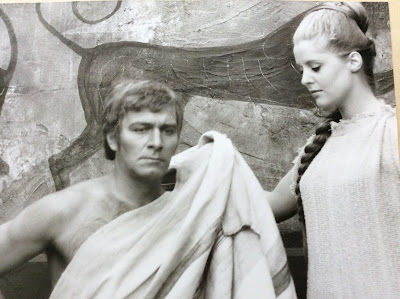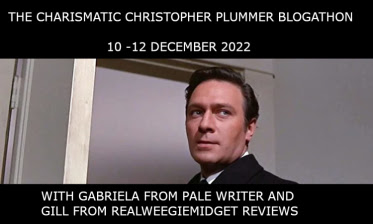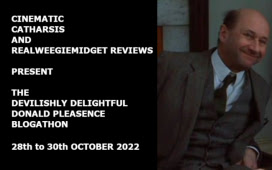Phil-for-Short (1919) and other silent film teenagers
Era uma vez uma garota chamada Damophilia
– ou Phil, seu apelido. Ela foi batizada em homenagem a um poema de Safo, uma
vez que seu pai era um grande conhecedor de cultura e literatura gregas. Phil
era uma garota muito ativa, trabalhando na fazenda usando roupas de menino, sem
se preocupar com a opinião dos outros. Quando seu amado pai falece, o mundo de
Phil vira de cabeça para baixo. Uma garota no final da adolescência, Phil é
interpretada, no filme de 1919, por uma atriz de 31 anos, Evelyn Greeley – e essa
está longe de ser a única personagem adolescente interpretada por adultos na
era o cinema mudo.
Once upon a time, there was a girl
named Damophilia – or Phil, for short. She was named after a poem by Sappho because
her father was a connoisseur of the Greek culture and literature. Phil was a
very active girl, working on the farm wearing boy’s clothes and not caring for
other people’s opinions. When her devoted father passes away, Phil’s word goes
upside down. A girl in the late teens, Phil is played, in the 1919 movie, by a
31-year-old actress, Evelyn Greeley – and this was not the only teen character
to be played by an adult in the silent movie era.

Antes de explorar “Phil-for-Short”
e outros adolescentes do cinema mudo, precisamos sabem quem exatamente pode ser
chamado de adolescente. A Organização Mundial da Saúde diz que a adolescência
vai dos 10 aos 19 anos. Na maioria das sociedades, a adolescência é um período
ambíguo entre a infância e a idade adulta, com os adolescentes navegando mares
de mudanças e aprendendo com as experiências. Mas não foi sempre assim: podemos
até mesmo dizer que “adolescente” e “adolescência” foram invenções do século
passado.
Before we dig into “Phil-for-Short”
and other silent screen teens, we need to know who exactly can be called a
teenager. The World Health Organization says that adolescence happens between
ages 10 and 19. In most societies, adolescence is an ambiguous period between
childhood and the adult age, with teens navigating lots of changes and learning
along the process. But it wasn’t always like that: we can even say that
“teenager” and “adolescence” were invented in the last century.

De acordo com um artigo do Saturday Evening Post, a palavra “adolescente” existia desde o começo do século XX, mas
raramente era usada. Cinquenta anos antes, pessoas jovens, e até mesmo crianças,
eram empregadas em fábricas, algo que foi depois considerado inapropriado e a
educação se tornou obrigatória. Escolas de ensino médio apareceram e se
desenvolveram como um lugar em que adolescentes poderiam se organizar e, até
certo ponto, viver sem muita supervisão dos adultos. Dito isto, podemos afirmar
que “juventude” é um termo melhor para descrever uma categoria que englobava
adolescentes e jovens na era do cinema mudo. Agora vejamos como a juventude era
retratada nas telas.
According to an article from the
Saturday Evening Post, the world “teen-ager” existed since the beginning of the
20th century, but it was hardly ever used. Fifty years before, young
people, and even children, were sent to work in factories, something that was later
deemed inappropriate and education became mandatory. High schools appeared and
developed as a place where teenagers could organize and, to an extent, live
without much adult supervision. That being said, we can affirm that “youth” is
a better term to describe a category that encompassed teenagers and young
adults in the silent film era. Now let’s see how “youth” was portrayed on
screen.

Em filmes como “American
Aristocracy” (1916), jovens eram o foco, mas eram jovens adultos e não
adolescentes. Neste filme em particular, como ele fez antes e faria depois,
Douglas Fairbanks – com 33 anos quando o filme foi lançado – interpreta um
jovem que é o modelo da aristocracia norte-americana: ousado, vistoso e bonito.
Seu carro é um objeto importante na história, assim como os carros foram
importantes para os adolescentes ganharem independência.
In films like “American Aristocracy”
(1916), young people were the focus, but these were young adults and not teens.
In this particular movie, as he did before and would do after, Douglas
Fairbanks – 33 when the movie was released – plays a young fellow who is the
role model of American aristocracy: bold, dashing and handsome. His car is an
important asset in the story, as cars were important to give young people
independence.
Agora que mencionamos Fairbanks,
precisamos também mencionar Mary Pickford, a atriz mais popular da década de
1910. Quando adolescente, antes de entrar na indústria do cinema, Mary Pickford
era uma atriz de teatro na Broadway. No cinema, Mary teve muito sucesso
interpretando crianças perspicazes – mesmo tendo vinte e tantos anos na época –
mas ela também interpretou adolescentes ousadas em filmes como “The Little
American” e “A Romance of the Redwoods”, ambos de 1917.
Now that we mentioned Fairbanks, we
must also mention Mary Pickford, the most popular female film star of the
1910s. As a teenager, before she entered the movie business, Mary Pickford was
a stage actress appearing on Broadway. On film, Mary had a lot of success
playing resourceful kids – despite being in her late 20s at the time – but she
also played bold teens in movies such as “The Little American” and “A Romance
of the Redwoods”, both from 1917.
Depois de falar de Mary, podemos
voltar a “Phil-for-Short” e falar da protagonista Evelyn Greeley. O nome pode
não significar nada para você, mas Greeley foi uma atriz de sucesso na era
muda. Nascida na Áustria em 1888, ela migrou para Chicago com a família aos
nove anos e, em 1914, aos 26, entrou para o cinema com pequenos papéis para os
estúdios Essanay. Entre 1915 e 1922, ela fez 30 filmes, muitos deles para a
World Film Corporation, incluindo “Phil-for-Short”.
After talking about Mary, we can go
back to “Phil-for-Short” and talk about the lead Evelyn Greeley. The name may not
mean anything to you, but Greeley was a prominent silent film actress. Born in
Austria in 1888, she migrated in Chicago with her family when she was nine and
in 1914, aged 26, entered the movie business working in small roles for
Essanay. From 1915 to 1922, she appeared in 30 films, many of them for the
World Film Corporation, including “Phil-for-Short”.
Depois que o pai de Damophilia
morre em “Phil-for-Short”, todas as pessoas resolvem dar palpite na vida da
garota: ela precisa parar de ser tão moleca e deve se casar! Infeliz com sua
nova vida, Phil foge e, vestida de homem, decide fingir ser professora
assistente para fazer com que um professor universitário, conhecido misógino
que sabe tudo sobre a Grécia, mude de ideia em relação às mulheres. O que
acontece a seguir é bem previsível.
After Damophilia’s father dies in “Phil-for-Short”,
people everywhere believe they have a say in the girl’s life: she must stop
being such a tomboy and she must marry! Unhappy with her new life, Phil runs
away and, fully dressed as a boy, decides to pose as an assistant professor in
order to make a college professor, a well-known misogynist who knows all about
Greece, change his mind about women. What happens next is pretty predictable.
Não havia uma categoria de “cinema
adolescente” na era do cinema mudo. Havia ou estrelas mirins – como Jackie
Coogan, Baby Peggy e, até certo ponto, Mary Pickford – ou estrelas que
agradavam aos jovens – como Fairbanks no começo de sua carreira. Com exemplos
como “Phil-for-Short”, podemos dizer que definitivamente havia filmes sendo
feitos com foco no público jovem – um público que moldou o cinema e cresceu com
a nova arte.
There wasn’t a “teenager movie”
category in the silent movie era. There were either child stars – such as
Jackie Coogan, Baby Peggy and, to an extent, Mary Pickford – or stars who appealed
to the young folks – such as Fairbanks in the beginning of his career. With
examples such as “Phil-for-Short”, we can say that there were definitely movies
made targeting the young audience – an audience that shaped cinema as it grew
with the new art.
This is my contribution to the Fake Teenager Festivus, hosted by Rebecca at Taking Up Room.






.jpg)


































